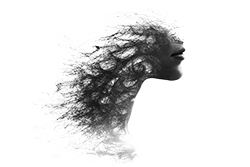In the heart of a bustling city, as the sun dips below the horizon, a transformation begins. Streets once awash with the natural light of day are now illuminated by a kaleidoscope of glowing hues. Among these sources of nocturnal luminescence, neon signs hold a special place. These radiant beacons, with their vibrant colors and enticing glow, are not merely tools of commerce or simple street ornaments. They are, in essence, a unique blend of art, science, and a nostalgic whisper from the past, speaking profoundly to both the heart and the mind.
The story of neon signs begins in the early 20th century, a period marked by remarkable scientific discoveries and artistic revolutions. It was in 1910 that the French engineer Georges Claude presented the first neon lamp to the public at the Paris Motor Show. This innovation was not just a leap in lighting technology; it was a harbinger of a new aesthetic in urban landscapes. In the ensuing years, neon lighting began to proliferate, first in Paris and then across the globe, symbolizing modernity and the future.
The science behind neon signs is as fascinating as their visual appeal. Neon, a noble gas, is inert and colorless in its natural state. However, when placed in a vacuum tube and subjected to a high voltage, it emits a brilliant red light. This phenomenon, known as gas discharge, occurs as electricity energizes the neon atoms, causing them to emit photons. By adding different gases or coatings inside the tubes, a spectrum of colors can be achieved. Argon produces a lavender glow, helium a pinkish hue, and xenon a soft blue light. This rainbow of possibilities is a playground for sign makers and artists.
The artistic aspect of neon signs is undeniable. Each sign is a bespoke creation, involving skilled craftsmanship in bending the glass tubes into intricate designs or letters. This art form requires not only technical expertise but also a creative vision. The best neon signs are those that capture the essence of a place or a brand, becoming landmarks in their own right. From the iconic signs of Las Vegas to the bustling neon streets of Tokyo, these luminous displays are as much a part of the cityscape as the buildings they adorn.
However, the appeal of neon signs extends beyond their visual beauty and technical ingenuity. There is an inherent nostalgia in these glowing tubes—a longing for a bygone era. Neon signs hark back to a time when life was seemingly simpler, and craftsmanship was valued. They remind us of classic American diners, historic theatres, and the golden age of advertising. This nostalgia has fuelled a resurgence in the popularity of neon signs in recent years, as businesses and individuals seek to capture a piece of this romanticized past.
Despite the advancements in LED technology, which offers a more energy-efficient and durable alternative, neon has held its ground. The reason lies in its unique aesthetic that LEDs have yet to replicate fully. The warm, inviting glow of a neon sign has a depth and a character that LEDs often lack. This is why neon signs continue to be sought after for retro designs and in places where ambiance is paramount.
In conclusion, neon signs represent a fascinating intersection of science, art, and nostalgia. They are more than mere advertisements or decorative pieces. They are a canvas on which the story of the 20th century is written, glowing brightly against the night sky. In a world increasingly dominated by digital screens and LEDs, neon offers a tangible and warm reminder of human ingenuity and creativity. As we navigate our neon-lit streets, we are not just passing under colorful lights; we are walking through a living museum of history, art, and technology—a testament to the enduring appeal of these luminous emblems of the past and present.



















Leave a Reply